A Great Idea for Microwaves!
Check this guy out! This is a great idea!
Join Dr. Bill as he examines the wild and wacky world of the web, computers, and all things geeky! Hot Tech Tips, Tech News, and Geek Culture are examined… with plenty of good humor as well!
Check this guy out! This is a great idea!
Podcast: Play in new window | Download (203.0MB) | Embed
Subscribe: RSS
Raspberry Pi 2 arrives: 6x faster for $35, RadioShack is closing: a remembrance, the Kano computer kit, Twitter reaches deal to show Tweets in Google search result, a live action Zelda show on Netflix, GSotW: SpaceSniffer, get Chromecast rewards.
Links that pertain to this Netcast:
International Association of Internet Broadcasters
 |
|
 |
 |
| Download M4V | Download WebM | Download MP3 | Download Ogg |
 |
 |
Podcast: Play in new window | Download (Duration: 16:16 — 14.9MB) | Embed
Subscribe: RSS
Raspberry Pi 2 arrives: 6x faster for $35, RadioShack is closing: a remembrance, the Kano computer kit, Twitter reaches deal to show Tweets in Google search result, a live action Zelda show on Netflix, GSotW: SpaceSniffer, get Chromecast rewards.
Links that pertain to this Netcast:
International Association of Internet Broadcasters
 |
|
 |
 |
| Download M4V | Download WebM | Download MP3 | Download Ogg |
 |
 |
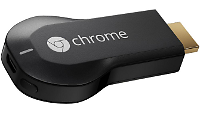 Do you own a Chromecast? Well, Google wants to reward you for buying their $39.00 device! You can go to this link and, if you have your Chromecast hooked up to your TV, and click the link, you will get free offers, including a $6.00 credit for a movie! Pretty cool! Thanks, Google!
Do you own a Chromecast? Well, Google wants to reward you for buying their $39.00 device! You can go to this link and, if you have your Chromecast hooked up to your TV, and click the link, you will get free offers, including a $6.00 credit for a movie! Pretty cool! Thanks, Google!
By the way, here’s the offers I got when I did it… your mileage may vary!
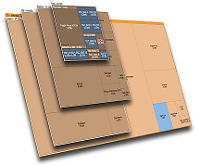 SpaceSniffer is our Geek Software of the Week! It provides a TON of information on your PC’s disk usage! If you are trying to clean up, this is the tool you need!
SpaceSniffer is our Geek Software of the Week! It provides a TON of information on your PC’s disk usage! If you are trying to clean up, this is the tool you need!
“Description
SpaceSniffer is a freeware disc space analyzer for Windows that make use of the Treemap concept to view the current disk usage. Among the most notable features you’ll find drag and drop support, intuitive structure layout (multiple views for different media), zoom elements (browser-like navigation), powerful filtering (you can filter your results based on size, file name age), customizable options (geometry, colors, behavior), fast scan of your hard drive (navigation works even when the scan didn’t finished), support for NTFS Alternate Data Streams and so on. Finally, this program is fully portable on all popular Microsoft Windows versions (doesn’t have a setup file, therefore it doesn’t mess up with your current registry – it just adds a XML configuration file). You can use the executable file on other Microsoft Windows OS, there’s no need to extract the archive each time.
SpaceSniffer Review
Install: There’s no setup file, as this software is delivered as a compressed Zip archive where all you have to do is to extract its content and run the program. If your archive manager doesn’t create (automatically) a folder for you, make sure that you first create one and extract the content of SpaceSniffer archive in it, otherwise it will extract multiple files and you’ll have to look for ‘SpaceSniffer.exe’. The current version (1.1.4.0) has been tested on Windows 7 Ultimated Edition (32-bit) and Windows 8.0 (64-bit) and it worked well on both Microsoft Windows versions.
Main usage: You’re here because you probably have no idea where the HDD drive space disappeared or you just want to see if you can delete some occupied space with all kind of files that you forgot but there are so many that it’s time consuming to manually review them. SpaceSniffer will help you to reclaim space in seconds (maybe minutes on large hard drives/partitions). For those who never used this software before, I will split the action in three categories: scan process, taking action and (optional) saving data.
Scan process: The first thing to do after you run SpaceSniffer for the first time is to choose a partition and perform a quick scan (the program will ask you to choose the drive partition or type the path). The scan should finish quickly, there’s a status indicator on the right-corner (up) of the main software interface.
Important: If you scan the system partition (the one that Windows is currently installed) make sure that you don’t delete files that are required by your operating system to run. It’s easily to feel ‘lost’ in your operating system data but you shouldn’t mess with those files, unless you really know what you’re doing.
Taking action: Once the scan is finished, you will be presented with a window containing a list of all files found grouped by their data type (free space, operating system files, other type of data). From this point, you can ‘browse’ or better said ‘zoom’ inside each file so that you can discover other files included in a certain folder until you get to the last one. For instance, if you have a folder that contains other 10 folders and each one has others folders, you can easily take a look to see what’s inside of them. Once you identified the type of the files and their size you can choose a further action: delete or keep them with a single ‘right-click’ of your mouse on that file and choose ‘Delete’. Just in case that you feel lost after browsing through your hard drive space you can always ‘Go Back’, ‘Go to upper leve’, ‘Go Home’ or even ‘Perform a new master scan’ – you have all of these buttons in the navigation bar of SpaceSniffer.
Saving data: A powerful feature that you won’t find at other similar tools is the ‘Export to file’ option. For any reason, if you want to export the data found with this tool, you can use the ‘File’ option from you menu and from there choose ‘Export to file’. To customize your export form choose your data type (please note that you have a customization option next to ‘Configuration’): ‘Grouped by folder’, ‘Simple file list’ or ‘Summary’ and save the stats.
Conclusion: There’s much more to say about SpaceSniffer. If you’re a system administrator or an advanced user you can search for specific files using filters (you can even combine multiple filters), tag certain files to keep track of examined files, exclude tagged files, etc. You can customize this program in many ways, although the Tips and Tricks section doesn’t list many of them. There are many other options included, I didn’t listed all of them. My personal opinion is that the largest base of users are regular home users that simply wants a free disk usage analyzer that can help to clean/free some occupied space on their computers. Without a doubt, this is an excellent disk usage (hard drive) visualization tool that works great for both novice and advanced users. Considering its free, clean and portable I would highly recommend a donation to the author to support his wonderful work.”
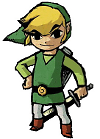 Supposedly, a live action Zelda show is being developed for Netflix! They are billing it as a “Game of Thrones for the whole family.” Will the Zelda franchise work on the small screen? I know a lot of gamers that hope so! But, it also has the possibility of being very lame! I guess we’ll see!
Supposedly, a live action Zelda show is being developed for Netflix! They are billing it as a “Game of Thrones for the whole family.” Will the Zelda franchise work on the small screen? I know a lot of gamers that hope so! But, it also has the possibility of being very lame! I guess we’ll see!
Is that a good thing? Probably!
Twitter Reaches Deal to Show Tweets in Google Search Results
Bloomberg) By: Sarah Frier – “Twitter Inc. has struck a deal with Google Inc. to make its 140-character updates more searchable online.
In the first half of this year, tweets will start to be visible in Google’s search results as soon as they’re posted, thanks to a deal giving the Web company access to Twitter’s firehose, the stream of data generated by the microblogging service’s 284 million users, people with knowledge of the matter said Wednesday. Google previously had to crawl Twitter’s site for the information, which will now be visible automatically.
The agreement underscores the progress that Twitter Chief Executive Officer Dick Costolo is making in getting tweets seen by more non-users and generating more advertising revenue from a larger audience. Twitter, which also provides data to Microsoft Corp.’s Bing search service and Yahoo! Inc., is aiming to draw more people to its site as user growth slows. Twitter this week announced deals to show advertising in Flipboard Inc.’s mobile application and with Yahoo Japan Corp.
Twitter shares rose 1.3 percent to $41.26 at the close in New York. The stock has advanced 15 percent this year. Google rose less than 1 percent to $529.83.
Engineers from Twitter and Google are already working on the arrangement, said the people, who asked not to be identified because the deal isn’t public. The two companies had a similar deal from 2009 to 2011. Ali Rowghani, Twitter’s former chief operating officer, had been against renewing the agreement to keep more control over Twitter’s content and it lapsed, the people said.
Mutually Beneficial
The renewed relationship benefits both companies, said Doug Anmuth, an analyst at JPMorgan, in a note to investors.
The deal means ‘more opportunities for Twitter to convert, and possibly monetize, logged-out users,’ he said. It will also increase the frequency that people with Twitter accounts check the site, he added.
‘For Google, we believe search results will be enhanced by access to real-time tweets and a much broader amount of content,’ Anmuth wrote.
Will Stickney, a spokesman for San Francisco-based Twitter, declined to comment. Jason Freidenfelds, a spokesman for Mountain View, California-based Google, didn’t respond to a message seeking comment.
There’s no advertising revenue involved in the deal between Twitter and Google, one of the people said. That suggests Twitter will receive data-licensing revenue, which was $41 million in the third quarter, up from $16 million a year earlier.
Anthony Noto, Twitter’s chief financial officer, said at the company’s analyst meeting in November that it had been working to make tweets easier to find through search engines, and that negotiating with search providers could be a ‘unique opportunity’ to distribute tweets to more people.”
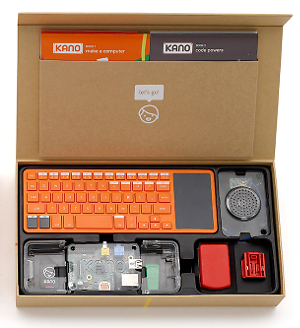 I wish I had this growing up… in fact, I wish I had this when my son, Ben was much younger! This is an awesome kit, with everything that you need to get young minds thinking in terms of computing! The manual is like a story book, that they follow along with, as they build their computer! How cool is this?!?
I wish I had this growing up… in fact, I wish I had this when my son, Ben was much younger! This is an awesome kit, with everything that you need to get young minds thinking in terms of computing! The manual is like a story book, that they follow along with, as they build their computer! How cool is this?!?
“Kano is a computer you build and code yourself. Lego simple, Raspberry Pi powerful, and hugely fun.
What’s inside? The Raspberry Pi, Model B, is the lightweight, powerful brain behind thousands of Kano creations. Its system-on-a-chip packs an ARM 700MHz CPU and 512MB RAM.
Manuals are boring. Kano is a story. With illustrated ideas and simple steps, build a computer, make stuff, and explore a new world. Meet cool characters and level up.
Power up your personal computer with a speaker. Snap together the system, draw power from two secret ports (choose carefully).
Then – raise the roof.
Keyboard: Your magic wand. Type overhand or hold it game controller style.
Navigate nimbly with an integrated touchpad, and independent click buttons. Wireless, two ways – USB RF for your Kano, and Bluetooth for the World
Kano OS. An open-source OS for exploration, creation, and play. Code mountains in Minecraft and powerups in Pong. Synth music and stream video. Dive into the command line. Invent something new.
An SD Card. Pre-loaded with OS: Sandisk Ultra, 8GB, Class 10 micro SD card and SD card adapter.
A Case. Transparent and easy-clipping, with cool customizations.
Build your own style, switch out case cards, print new covers.
Stickers. Decorate your kit, your house, your parents while they’re asleep.
Cables. Connect a screen with HDMI, power up with mini-USB.
Ships with a global plug.
WiFi. Get connected with a dongle that configures seamlessly,
with simple setup.
Ships free to most countries, for only $149.99.”
It was kind of sad this week hear that RadioShack would be closing. RadioShack was one of my favorite stores growing up… it had all kinds of cool electronics that I loved to stare at, and drool over. I can remember desperately wanting a RadioShack computer growing up, but they were just so expensive I couldn’t afford them. Then, later on, I ended up buying a RadioShack Color Computer with 4K of memory! Of course, I immediately maxed it out to 16 K! I learned to program in BASIC on that computer… and became a champion of the game called “Starfire” posting my high score to Color Computing magazine. Those were the days!
Now, it appears that RadioShack may sell half its stores to Sprint, and then close the rest. Apparently, competition from Walmart and other big box stores pushed it into bankruptcy. I can’t help but feel that an era is over with the demise of RadioShack.
The first “real” job that I ever had was working at RadioShack. The manager at the time begged me stay, after I’d taken a job at Christmas that was supposed to be part-time. I went on to work there for a year or two, eventually ending up at the Thomasville North Carolina store that used to be at Southgate Shopping Center.
Anyway, all of this just reminded me of times long ago when RadioShack was a big deal. So, we’ll miss you RadioShack!
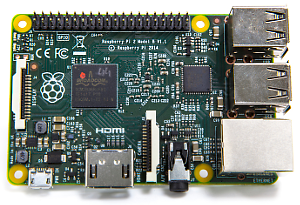 Now, THIS is cool! Same price, yet six times the power! I NEED this one!
Now, THIS is cool! Same price, yet six times the power! I NEED this one!
Raspberry Pi 2 Arrives: 6x Faster, An ‘Entry-Level PC’ For $35
TechCrunch – By: Natasha Lomas – “Grab your screwdrivers, makers! There’s a new, more powerful Raspberry Pi in town… The just announced Pi 2, which goes on sale today, adds a quad-core chip and double the memory to support more intensive processing tasks.
The Pi Foundation also reckons this sequel takes the Pi microprocessor ‘firmly into the PC space’, as they put it — in terms of power punch packed.
‘With the Pi 1, there were people using it as a PC but you had to make allowances for the fact it was a $35 PC,’ says Pi creator, Eben Upton, in an interview with TechCrunch. ‘The big difference with the Pi 2 is it’s a PC. It’s not a PC which is pretty good considering it cost you $35. It’s a PC that’s pretty good.’
‘We think there’s a real opportunity here… we’ve got a web browser, you can install LibreOffice on it, and then you’ve got a machine which is quite plausible as an entry-level PC,’ he adds.
To that end, Upton notes the Foundation will be adding software such as LibreOffice to the reference Raspbian install in the coming months. The hardware will also be able to handle running Microsoft’s Windows 10 OS.
Who might want $35 entry level PCs? Schools might, for one, says Upton. ‘This plays into some of the educational stuff — it’s just that much more useful as a general purpose computer,’ he adds.
Last year Google’s philanthropic arm, Google Giving, stumped up $1 million to fund free Pi for 15,000 U.K. schoolkids, while various startups have taken the low cost microprocessor as their starting point to spark computing education businesses to help people learn coding or electronics tinkering, such as Kano with its DIY computer, or more recently Pimoroni’s Flotilla electronics kits. So there’s already plenty going on with Pi and pupils.
Zooming out from there, to take in the wider, ’embedded, hobbyist, building a robot’ community of Pi users — where Upton notes ‘Pi has been very strong’ — well, those guys are clearly not going to have any trouble finding uses for the additional power that Pi 2 brings.
‘There are obviously places where the extra processing comes in useful,’ says Upton. ‘Image processing is the obvious one. If you’re trying to build a robot that has one of the Pi cameras on it to react to the environment, you’re just that much better able to write those image processing algorithms on a big, fast quad-core ARM, rather than a medium performance, single core ARM.’
Pi 2: More power, same price
The Pi 2 — or the Raspberry Pi 2 Model B, to give it its full name — retains the form factor as its predecessor Pi Model B+ board to ensure backwards compatibility with adds-ons, accessories, online tutorials and the like.
An ‘enormous amount of effort’ went into this, says Upton. ‘People have been saying to us for a couple of years why aren’t you making a faster Pi?’ But the Foundation wanted a faster Pi that retained the same form factor — hence why they’ve taken two years time to get to Pi 2.
‘If we’d been prepared to give up compatibility we could have had a faster Pi out quite a while ago but it wouldn’t have been a Raspberry Pi. It would have been another computer with a Raspberry Pi logo on it,’ he adds. ‘We just didn’t want to do that kind of ‘brand extension’ engineering. We wanted to do actual engineering.’
The $35 price-tag also remains in place, thanks in part — says Upton — to the success of the original Pi enabling economies of scale to kick in via larger component orders. The P2, like the P1, will also be manufactured largely in the U.K., at Sony’s facility in Wales. (A small amount of Pi is also produced in China.)
The Pi 2’s core is a 900MHz Quad ARM Cortex-A7 processor, which Upton says should deliver a 6x performance bump on the current top of the line Pi (the aforementioned Model B+, which only arrived last summer — itself an upgrade on the original Model B, bringing more ports and a neater form factor).
‘What we’ve been able to do with Pi 2 is go from a single ARM 11 Core, which is a fairly antique processor now, to a quad core ARM Cortex A7. Which is pretty much a modern top of the line processor, and gives us something like 6x the processing capability of Raspberry Pi 1,’ he notes.
On board memory on the Pi 2 has also doubled from 512MB to 1GB. Interfacing capabilities and the form factor are the same as the B+, as noted above.
‘There are always things that people want,’ adds Upton. ‘A lot of the obvious things that people were asking for for Pi we think we solved back in July last year [with the Model B+] — more IO, more USB, a better form factor, lower power consumption. But there was a sort of residue of things we weren’t able to resolve and that was largely to do with the silicon.
‘So Pi 2 resolves, pretty much, all of the remaining issues that people had with Pi — and those are mostly around memory and processing capability.’
Upton predicts ‘at least tens of thousands, possibly as many as 100 thousand’ sales of Pi 2 on the first day. ‘I think we can deal with a spike. There might be a little bit of a queue,’ he adds.
Sales of the original Pi are running a little over 200,000 units per month now, according to Upton. That board won’t be immediately discontinued — but rather will continued to be sold for as long as there is demand for it. So industrial users aren’t going to be forced to upgrade to Pi 2.
‘All of these products stay in the market until there’s no more demand for them,’ he adds.
Total Pi sales at this point in the product’s lifecycle is around 4.5 million, according to Upton. The first Pi — the original Model B — was launched three years ago, in February 2012.
Where is Pi doing best now? ‘North America is really getting very strong now,’ he tells TechCrunch. ‘Historically its been our biggest market but it’s underperformed on a per capita basis… That’s really picking up. China’s really picking up — coming from a small base, China’s growing really fast. People really seem to have taken to it.’
Even more Pi…
Asked about the lower priced Model A+, which the Pi Foundation only refreshed last November, Upton said the Foundation like that $20 price-point, so does envisage it might to do a sequel in time — but not anytime soon.
‘The A+ has been really successful. It’s been much more successful that the original Model A Pi… so that $20 price-point, and the small form factor and the low power consumption actually are a really sweet combination, and I think it really grabbed people’s attention. So we’re going to leave the A+ anchoring the bottom end. That’s going to be there for at least a year as our bottom end device, and then maybe sometime in 2016 we’ll think about whether we can find a way to do something that’s got the new quad-core processor… and maybe a little more RAM,’ says Upton.
‘In practice it’s not something we’ve got planned, it just something we’ve left room for,’ he adds.
Meanwhile the Pi touchpanel, which Upton showed off at Disrupt London in October, is still in the works. The components are sitting in a warehouse but the Foundation has prioritized getting Pi 2 out the door first so the touchpanel has inevitably been on the backburner. ‘I’m hoping we can squeeze it in this quarter, build and launch it,’ he adds.”